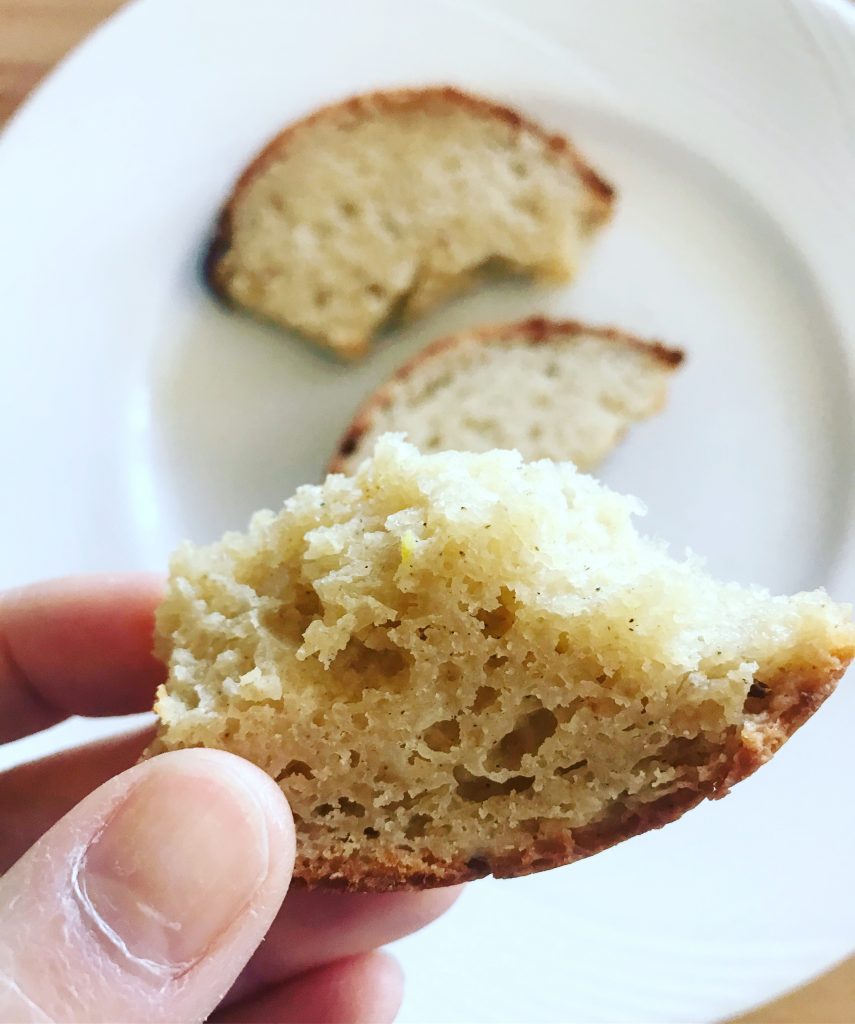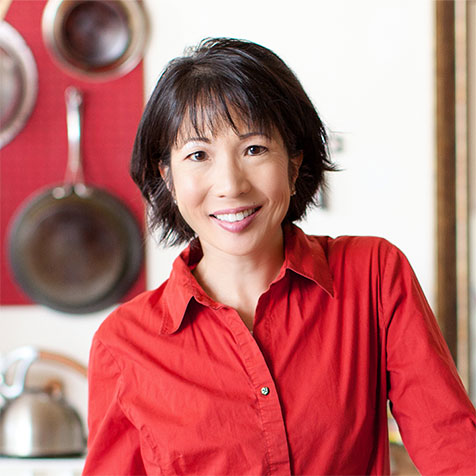If you are reading this post in the month of April from an area of the world where the SARS-Covid-2 virus has already arrived, you might be thinking that this topic is already as old as the month-old loaf of bread.
However, if you had followed the general guidelines for preparing emergency supplies for a global pandemic outbreak that could affect supply chains, you might be seeing what I see: there’s still food available, yet the choices for the more atypical person are either thinner than usual, or getting them takes longer. That’s because not only is transportation and delivery affected, but the food supply itself has changed. Workers have become sick. Food factories have been shut down for testing. Some foods are rationed at the grocery stores.
We’re going with less.
I checked in with someone with whom I have come to rely on her forthright opinion, and asked Dr. Michelle Mazur if she thought I should change my messaging during a global pandemic. I mean, is it still on-target to try to “make food fun again”, when grocery store shopping has become an unpleasant ritual involving wearing a mask, cleaning hands repeatedly, and wiping down bags and packaging with disinfectants? Her response was: Yes! The message is still the same — we all still need to eat, and if the food is not appealing, we typically won’t eat well. Food still needs to be tasty and relatively easy to make.
And while I hear my friends joke about how the pandemic and subsequent Stay Home Order (aka Shelter in Place) is literally reshaping their bodies, the reality for the atypical eater – that is, someone with food allergies, intolerances, autoimmune disease, and chronic illnesses that require a medically-necessary diet — is that we will either suffer because we can’t get some of the foods we need, or we will lose weight from not getting enough overall calories, period.
I can get a box of mixed greens and kale, no problem, but how many people do you know can binge on a box of greens and kale, right? It’s not like a bag of Doritos or a package of Oreos, is it?
So, it’s my focus in this post to talk about pandemic eating for the atypical person, with the same message of making all that food fun AND yet functional. And there will be absolutely no food shaming and body shaming here, because my focus is on keeping you healthy. Realistically, you and I might be even more limited in our choices because the supply chain isn’t as dependable or timely, your neighbors might have started buying stuff they never buy before because what they wanted was gone (i.e. picking up a bag of gluten-free flour because regular flour was sold out), or the restaurants you used to go to are either closed or doing take-out orders under conditions that make it difficult to be sure your food is made to your medically-necessary specifications.
A part of me cringes. First, I know that the person trying to bake normal, wheat flour bread with a bag of gluten free bread is about to be horribly disappointed unless they bought some other things with it, such as psyllium husk or xanthan gum. Second, you probably know that I never lay down and give up, so when things get tough, I roll up my sleeves and problem-solve my way through to other side.
Then, I share everything I learn with you!
Grocery Shopping and Online Food Purchases
Here’s a few tips for grocery shopping and online food purchasing:
- Do menu planning for the week, and if you have the financial means to purchase at least two weeks worth of fresh foods, canned foods, and frozen foods, extend the menu planning to two weeks of meals that you can rotate to keep food fun again.
- Have a “back up” meal in mind when key ingredients are sold out or delayed from delivery. You might want to have split pea and ham soup, and yet find out that the grocery stores was sold out of split pea but not mung beans (often found in the Asian food section of chain stores)
- Make a list of all the foods you need to buy in the grocery store, and map them out, literally, in the store, so you are only needing to do a single pass in any particular aisle. Your goal: get in, get out, as efficiently as possible, reducing your overall time of exposure to others.
- Determine if there are some foods you can purchase online, and order ahead of when you need them, in case there are delays in delivery. Examples: gluten free oatmeal, brown rice pastas, tea, local delivery produce from farms, personal hygiene products, home care and cleaning products.
- Count how many servings of fruits and vegetables you are consuming per day. If these have slowly trickled down into less and less servings over time, make an effort to bring these back up to normal, even if you need to tap other forms, such as frozen, canned, or dried. Example: if a box of blueberries are going to go bad too quickly, consider cooking them while they are fresh into some porridge, or freezing half of a container for later use.
Prioritizing Consumption
From my work in counseling, I recognize that most people find it somewhat painful to waste money, even if it’s a dollar. When was the last time you took four quarters and intentionally threw them into the rubbish bin? How about taking two dollar bills, and cutting them up with scissors? Like, never? Right! Because we don’t do that.
Yet when fresh food you purchased goes to waste, you might as well be tossing those quarters and slicing up dollar bills.
Instead, adopting a mentality of reducing, and even eliminating, food waste is something all of us can do. In the past month, the only thing I have managed to waste was two spoonfuls of coconut milk that I did not use fast enough before it spoiled. To get that waste to zero, all I had to do was move the coconut milk quickly into a glass container, which helped me see how fast I was consuming that coconut milk, and then putting that ingredient into several dishes on my weekly menu. Problem solved.
Adopting a mentality of reducing, and even eliminating, food waste is something all of us can do
What is the priority of consumption? Meat, fish, eggs, and dairy have obvious “best used by” dates that should be prominently stamped onto those food products. If you freeze or cook them right away, you extend their longevity. By batch cooking foods at the beginning of the week, you don’t have to worry about food spoilage. Cruciferous vegetables and root vegetables, which are hardy in nature, can last all week, while leafy greens will wilt within the same timeframe.
Some of the newer refrigerator styles have a produce drawer that removes the moisture that tends to decrease shelf life of foods like tomatoes, greens, and vegetables with a lot of surface area. If you don’t have one of these, removing greens from a box and letting them dry out a bit before putting them in a container with a paper towel in it may help keep those greens fresher longer.
Special Occasion Eating and Celebrating

Will you be celebrating a special occasion during your county and nation’s lockdown? It pays to think ahead to how you might be able to make a special occasion meal and dessert, even if you can’t access a lot of fancy ingredients, or you have a restricted diet.
In the month of April, we marked both our anniversary and my birthday. While we couldn’t share it with others under one roof, we did as others have — we had a Zoom virtual birthday party along with some sing-a-long time using an app that shares lyrics and music with everyone (so we’re in the same timing), and we collected ingredients across a few weeks, so there was no need to worry about last minute additions. While I don’t drink much alcohol, I was able to locally purchase a bottle of New Zealand Cabernet Blanc from one of the wineries we visited in January before the pandemic reached our shores. We ordered a specialty cake from Estela at Liberated Foods (not listed on the menu, inquire by phone), and for the first time in almost three months, we ordered out some food from two local restaurants that have catered to my needs in the past, so there were no concerns about accommodating my food allergies.
But you know what? That was just the food part of celebrating. What about the life part? What really matters to you? For me, my birthday means being grateful for another year of living. One way I wanted to mark my birthday was to run at least a marathon or a 53 kilometer run, whichever I could do in about six hours. Being that our trails are closed everywhere, that meant running in my neighborhood, so I created a one-mile running course, set my watch, and starting running as the sun came up. While I didn’t finish all 53 kilometers in that run, I did finish out the distance by the end of the weekend.
How you celebrate special occasions, whether private weddings, birthdays, anniversaries, and yes – sadly, funerals — takes some extra creativity, for sure. But one thing I’ve seen, you can find ways to make it special, even under these restrictions.
Make What You Can’t Find
On any given day, I can open my Social Media feed and see that yet one more person who was never known to cook or bake has made sourdough bread. And if they can’t find sourdough starter, they are making beer bread, which uses the fermentation of beer for the rise. And if they can’t find flour, they are making flourless chocolate cake from coconut oil, chocolate, sugar, and eggs.

There were some weeks we couldn’t find the one store-bought local brand of gluten-free bread that I can eat. So I used my bread-making machine and made my own out of the various GF flours I have collected, and then transferred the loaf to the oven to finish out the slow back so the center gets a thorough, even bake (this is a necessary step if you have an old-style breadmaking machine that doesn’t have a long, slow gluten-free bread option). You’ll be cheered to know that you can make gluten-free bread without a mixer or a bread-making machine; just be patient with the entire process, and be prepared to hang around the kitchen for at least four hours.
There are, of course, some things I won’t be making when I run out. One is nutritional yeast, which I like to sprinkle on gluten-free pasta or rice with meatless meals. Another is coconut milk, because I prefer to buy cans of it in bulk. Yes, you can make your own coconut milk with coconuts and water. Everyone has their limits; I certainly have mine. Yet my point is that if there is something you want but can’t find in the stores exactly as you would like them to be, try to have a little fun with your workaround.
Until we have effective treatments and a vaccine against the SARS-COVID-2 virus, it’s quite possible that the way we get food and the way we conduct our daily lives post-lockdown will continue longer than many of us anticipated. Rather than watch our choices continue to dwindle for the atypical eater, it’s time to get busy in the kitchen, get our creative thinking caps on, and whip up nutritious and delicious foods for ourselves and our loved ones.
If you need help bringing your ideas to the dinner table or snack time, please send an email to me via the contact page, and I’d be happy to set up a free consult over the phone or Zoom to get things rolling for you.




